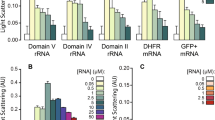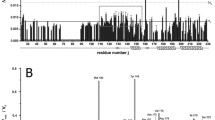Summary
Synthetic prion peptide PrP106–126 has been used as a model to understand prion diseases. The conformation of the peptide depends on the environmental conditions and it forms amyloid in vitro. The potential of this prion peptide to interact with nucleic acids has been studied using a fluorescent labelled nucleic acid by kinetic and equilibrium methods. A decrease in the fluorescence of the labelled DNA induced by the peptide with time is observed which is pH, ionic strength and temperature dependent. The activation energy of the reactions is ∼100 kJ mol−1. Lysine tripeptide and spermidine, carrying the same number of positive charges as the prion peptide, do not show an appreciable effect on the DNA. The binding constant between the prion peptide and DNA has a value of >106 M−1 in phosphate buffer, pH 8 which is of the same order of magnitude as the binding of a retroviral protein, p10, with model nucleic acids. It is tempting to speculate that this interaction might play a role in the prion diseases.
Similar content being viewed by others
Author information
Authors and Affiliations
Additional information
Accepted July 31, 1997 Received June 20, 1997
Rights and permissions
About this article
Cite this article
Nandi, P.K. Interaction of prion peptide HuPrP106–126 with nucleic acid. Arch. Virol. 142, 2537–2545 (1997). https://doi.org/10.1007/s007050050261
Published:
Issue Date:
DOI: https://doi.org/10.1007/s007050050261




